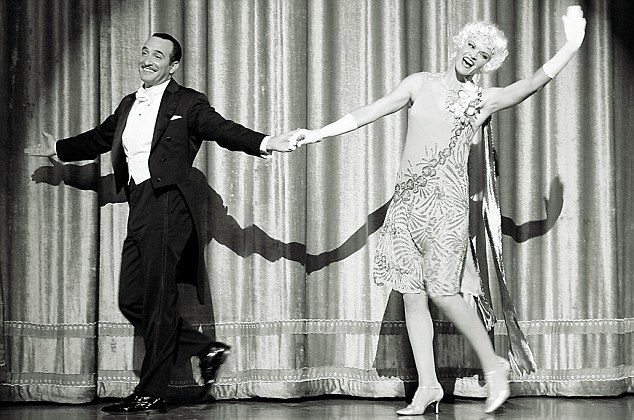 The set was made ready, the actors and crew taking their places waiting for cue where the clapperboard hit and the words ‘Lights, camera, action’ was said. But there was complete silence, no words uttered. The Silent era was indeed a smashing yet transitory presence in the history of cinema, now leaving us craving a piece of it. In a time where synchronised recorded sounds were out of reach, the ‘Silent era’ came to be, with the first ever narrative film, ‘The Great Train Robbery’ in the early 90s being a silent one. Before the introduction of full-length feature silent films, earlier films were as short as one reel which included ‘The horse in motion’ and Louis Le Prince’s ‘Roundhay Garden scene’ which were less than a minute. It was not before the early 1900s when iconic filmmakers like Sergei Eisenstein from Russia and D.W Griffith from the U.S, started putting together movies using cuts and montages. “Silent movies are really how the language of cinema develops. In a way, it is the purest form of cinema. Since there was no dialogue, everything that they had to do, they had to show.
The set was made ready, the actors and crew taking their places waiting for cue where the clapperboard hit and the words ‘Lights, camera, action’ was said. But there was complete silence, no words uttered. The Silent era was indeed a smashing yet transitory presence in the history of cinema, now leaving us craving a piece of it. In a time where synchronised recorded sounds were out of reach, the ‘Silent era’ came to be, with the first ever narrative film, ‘The Great Train Robbery’ in the early 90s being a silent one. Before the introduction of full-length feature silent films, earlier films were as short as one reel which included ‘The horse in motion’ and Louis Le Prince’s ‘Roundhay Garden scene’ which were less than a minute. It was not before the early 1900s when iconic filmmakers like Sergei Eisenstein from Russia and D.W Griffith from the U.S, started putting together movies using cuts and montages. “Silent movies are really how the language of cinema develops. In a way, it is the purest form of cinema. Since there was no dialogue, everything that they had to do, they had to show.
A lot of the subtle touches that we notice in our non-dialogue oriented movies nowadays have their roots in silent cinema,” says acclaimed film critic Baradwaj Rangan. Once the ‘Magic lantern’ came into existence, revolutionising cinema, there was a huge problem to produce recorded sound, until the first talkie ‘The Jazz Singer’ in 1927 after the discovery of Vitaphone system and Audion amplifier tube. “Though they were technically laid back, some of the very basic shots like zooming and pulling back, were used to its highest potency to bring life to its characters. One of the most celebrated scenes of the movie Battleship Potemkin, ‘the Odessa steps sequence’ is considered to be one of the most accurately edited scenes in cinema,” reminisces Baradwaj Rangan. Though the era was a high sailing one in celluloid of the past, it stopped once the talkies came about. “What we consume as art changes over time.

A silent film is almost synonymous with a black and white movie. Even today if you tell a common man to see a B&W movie, he would hesitate,” says Baradwaj Rangan. “Moreover the technique is old fashioned. You’d rather watch a movie which is a much suited variation to your attention gap,” he smiles. Though there were intertitles (printed text explaining parts of the movie, replacing dialogues) and mime cards, it could be seen giving out a redundant vibe for the younger audience. “Also silent movies depended so much on melodramatic acting. If there is a scene where the actor has to cry, he has to wail his heart out, flail his arms, to show his emotion in a silent movie as he has no words. That might not go well among the present audience,” continues Baradwaj Rangan.
The emergence of cinema in any language is in the form of silent movies and that came to India, through Pundalik, a mythological silent film way back in the 1900s, while Nataraja Mudaliar’s Keechaka Vadham was South India’s first feature film. Some of the prominent filmmakers of the era includes Devika Rani and V. Shantharam who indulged in riveting socially themed movies based on women emancipation. Though there have been certain silent movies in the recent past, it is big question whether the art would ever be back for real. “Movies like The Artist and Pushpaka Vimaana are not novelties, but rather gimmicks. It was silent cinema but done in the present generation style so that even the modern audience could enjoy it. It is not done the way ancient silent movies are made,” explains Baradwaj Rangan. “. I don’t see a revolution happening where the silent movies make a comeback simply because the audience has changed,” the film critic continues. One of the other reasons behind the demise of the art is that not a lot of silent films are even preserved well enough for people to even assess them. Almost half the movies are lost and the remaining are jerky in quality, poorly conserved. Unlike literature which is thousands and thousands of years old, cinema celebrated its century only two years back. Thus every iconic moment in cinema, is volatile and ever-changing. “The 1940s was a time when Film noirs and musicals were highly celebrated with around ten movies from the genre releasing every year. But towards the mid-fifties, the craze had faded. That is the same with silent movies or any celluloid technique for that matter. It keeps growing,” Baradwaj Rangan said.
